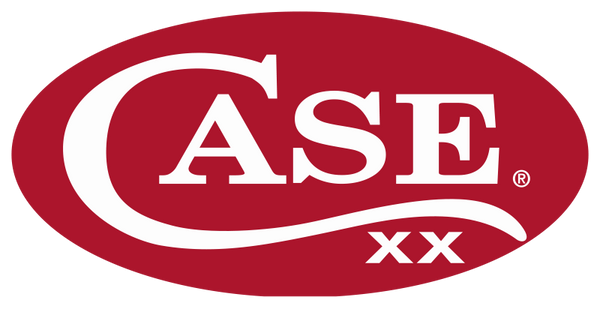Whittling Projects You Can Do At Home
Featured Knife: 44-pattern Medium Stockman with a blue synthetic handle.
Carving a crescent moon, or “the Man in the Moon”, is an excellent exercise in balance. Working towards a center line, maintaining balance between the left and right side of the face helps to keep focus on perspective while carving. As you go through this carving, take the time to stop often and keep track of your progress.
The rough out portion can be quickened with the assistance of a saw, but if you are anything like I was when I began carving, you do not have one. Truth be told, there have been very few projects where I had the tools needed for the task at hand. As a result of this I treat each carving like a puzzle, where the first step is laying out the carving in a way that will take advantage of the wood.
The knife I will be using is a 44-pattern Medium Stockman with a blue synthetic handle.

Layout the image on a 2-inch x 2-inch block that is 1⁄2- inch thick. You can scale the sizing to suit yourself. Color in the area of the wood that will be removed..

Rough out the moon shape by using the Sheepfoot blade, making score cuts around the outline of the face. This will cut down on potential tear outs. I have tried to design the moon in a way that uses the ink lines as guides for where to place score and stop cuts.

As you begin removing material from within the moon, start by working from the outside in. Work towards the center and continue the process moving to the nose. By carving to the nose, you will separate the areas both above and below allowing you to then tackle those sections.

As long as we can break the project down, then will be less likely to become frustrated, attempting risky short cuts or to rush when there is no need.
By breaking the carving down into sections, the carving becomes more manageable. I think Bishop Desmond Tutu explained it best with “How do you eat an elephant? One bite at a time”.

As you work closer to the edge of the drawing and begin cleaning up the profile, I want to make two important points. First, you do not have to carve right up to the ink line, and the reason is because it will be cleaned up as we start carving the facial features.
Second, switching over to the longer Clip blade can be very useful when cleaning this area. This is because of the upsweep of the blade, combined with the narrow point, which allows you to clean up the internal curves.

With the face being mostly cut free, note that there will be weaker areas in the wood because of the material we have removed. Everything to the right of the pointer in the photo above is weaker. Just keep this in mind as you progress.

Using an earlier version of the same carving as reference we can now start placing cuts and shaping the face. Rounding the “out” portion of the face towards the center. I place a score line to help separate the lips because that will be the only line that will be across the face.

As you round the face imagine a line running down the center of the face. Following that idea, you will start rounding both sides to meet in the middle. Rounding them evenly will create the overall shape of the face.

To define the rest of the facial features begin with a score cut directly on the ink line. Follow that cut up with a secondary cut from above and below the first cut. By rounding into the score cut you will establish the eye, cheek bones, and crows foot. As you make these cuts, allow your hands to work together. I line the cut up with the right hand and let the left thumb push and guide the blade through the cut. This gives you more control as you carve, and it will create cleaner work.

As you shape the bridge of the nose make this area slightly more narrow, then the brown above it and the cheeks. Play with this to find an appealing look for the face. The goal is to taper the face and create balance.
To recreate the image on the other side I begin with a pencil and establish similar lines, turning the carving back and forth to check my work.

When finishing the piece, you can never go wrong with a little linseed oil, or some watered-down ink to add color and a stained appearance. You can also thread a hook into the top to hang the carving as an ornament. The facial expression is another part you can adjust as you see fit, because in the end it is your carving, not mine.
Final Thoughts
As a general rule I will also show my carvings to my children to gauge my progress. Because if a 3- or 4-year-old can look at what you are carving and tell you what it is, then you are on track. If I must explain what the carving is, that’s my signal to keep working on it. If I seek praise for the piece, I will take it to my mother or grandmother. If I need some solid constructive criticism, then I take it to my wife, dad or grandfather.
Video Tutorial
You’ll find a complete video tutorial of this project at https://youtu.be/TFtSdq1hBbA
Download The PDF
Get the document version of this tutorial. Click here to download the file.
About the Craftsman
Brian McKinney is a self-taught carver from Virginia with his wife, four children, two dogs, and very soon some baby goats. For more examples of his work, you can find him on Instagram @McCarvings and on YouTube under the channel name TheCarver.

